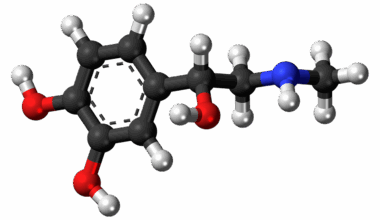Why Plyometric Exercises Won’t Hurt Your Joints
Plyometric exercises are often misunderstood, leading to common myths regarding their safety. Many believe that these high-impact, explosive movements increase the likelihood of joint injuries. In reality, when performed correctly, plyometrics can enhance joint strength and stability. Strengthening the muscles around your joints is key. Exercises like box jumps or burpees build muscle quickly while also enhancing coordination and agility. When you engage in these activities, you’re not just training your muscles; you are also conditioning your joints to better handle impact. The body responds positively when aligned mechanics are applied to high-intensity exercises. Proper warm-ups, cool-downs, and technique are crucial in preventing various injuries. If properly coached, guided and adhered to, the risk of injury decreases significantly. This adds to their many benefits, including improved athletic performance. Sound training approaches incorporate plyometrics seamlessly into routines. Injury prevention and improvement often go hand in hand. As such, the misconception surrounding plyometrics deserves to be addressed comprehensively. Ultimately, unlocking the benefits of plyometric training can cater greatly to both professional athletes and casual gym-goers alike. Let’s explore further how plyometrics can positively impact joint health.
One of the significant misconceptions about plyometric exercises is that they inherently cause joint pain or injury. In fact, research shows these exercises can increase muscle strength around the joints, helping them withstand greater forces without injury. The body’s larger muscle groups support smaller ones, which is where plyometrics shine. These benefits translate into a more resilient musculoskeletal system. To reap the benefits, focusing on proper execution is crucial. This means ensuring correct landing mechanics, adequate recovery, and appropriate progression in training difficulty. Muscles fatigue differently than joints; thus, conditioning for explosive movements allows athletes to improve their performance safely. Another vital factor is the surface on which these exercises are performed. Soft surfaces like gym mats or grass help absorb impact effectively. Investing attention in fitting exercises into overall conditioning is essential, too; a solid foundation in strength training prepares the muscles and joints for plyometric work. Choosing the right footwear will also aid in proper support. In overcoming these myths, athletes can effectively challenge themselves while prioritizing joint health through informed training protocols.
Understanding Joint Mechanics
Understanding the mechanics of joints during plyometric training can greatly influence their effectiveness. Joints benefit from controlled movements that plyometric exercises normally provide. The impact forces from jumping and landing strengthen ligaments and tendons over time as they adapt to the stress. Athletic populations, including basketball and volleyball players, utilize these movements to enhance their game. Joint stabilization occurs because high-impact training recruits multiple muscle groups. When performed habitually and correctly, the body becomes increasingly efficient with energy use during these explosive movements, thus reducing the risk of injury. It’s essential to engage in various warm-up strategies emphasizing flexibility, dynamic stretches, and activation exercises. These preparation methods enhance muscle responsiveness, ensuring a smoother transition into intense workouts. Plyometric sessions should include lower-impact variations for beginners. Drills such as bounding or lateral jumps introduce mechanics without excessive stress. As conditioning improves, gradually add more explosive actions. This progressive approach allows joints to adapt efficiently, maximizing plyometric benefits. Essentially, through a thorough understanding of joint mechanics, athletes can appreciate how plyometrics can promote joint health rather than damage. Boosting performance while retaining joint integrity is very much achievable.
In addition to personal precautions, consideration of organized guidance is vital. Coaches and trainers knowledgeable about plyometric training provide structure to mitigate risks. They’ll assess individual competition levels and formulate appropriate regimens. Taking part in structured classes or programs can ensure exercises are done safely. A controlled environment promotes correct form among participants, leading to fewer injuries over time. Joint health does not improve in isolation; it demands collaboration among education, exercise, and recovery. Moreover, education on proper footwear cannot be overlooked. High-impact plyometrics call for supportive shoes that cushion the feet and absorb shock effectively. An adaptable training environment where safety is a priority is key to preventing injuries. This involves choosing locations conducive to mobility and efficiency, much like gym mats or turf fields. Taking the time to integrate plyometrics into an existing training regime brings a wealth of benefits. Athletes can perform drills while remaining mindful of joint safety. Practicing responsible sports information is crucial for any athlete unwilling to jeopardize their training. By leaning into researched practices, they can enjoy the excitement of plyometrics with confidence in their joint well-being.
Evolution of Plyometric Training
Historically, plyometric training traces its roots back to Eastern European athletes in the 1960s who harnessed its effectiveness for competitive advantage. The concept emphasizes explosive power development and has gained traction globally since. Contemporary research continuously evolves, emphasizing varied training methodologies while focusing on safety. Unfortunately, myths surrounding joints persist, perpetuating discouragement and misunderstanding. Educators and trainers today strive to dismantle these myths using science-backed evidence. The modern understanding gives attention to the essential elements of recovery, muscle functionality coaching, and energy efficiency. Sports science continually promotes the idea that explosiveness and joint health do not have to contradict each other. Rather, cohesive routines encompassing dynamic movements can strengthen joint networks. Athletes benefit more when plyometric conditioning is integrated into regular training. Long-term adaptations emerge from consistent exposure to varied concepts. Addressing myths with factual data fosters supportive athletic cultures that encourage athletes to experiment while learning valuable lessons on proper training techniques. Consequently, they gain a competitive edge while ensuring joint safety remains a top priority throughout their careers.
Monitoring recovery is as vital as executing exercises. Following plyometric bouts, joint recovery utilizes techniques like foam rolling, massages, and proper nutrition. These strategies facilitate healing and improvement of joint functionality. Accordingly, athletes become more equipped to perform explosive actions safely. Incorporating recovery protocols into routine training builds accountability and emphasizes the importance of self-care in high-impact sports. Having clear methods to track progress is beneficial. Journaling exercises details or employing fitness apps not only aid in improvement but keep athletes aware of their body’s responses. Adjusting workouts based on feedback from both performance and recovery data ensures longevity in training without unexpected setbacks. Moreover, adapting plyometrics can involve breaking exercises into manageable segments, escalating challenges with safety precautions. Finding the right personal balance is necessary for optimal performance while monitoring joint health. Consistency fosters resilience, ultimately reaping the benefits of plyometric routines. Athletes gain not only functional strength but revitalize their passion for training through well-thought strategies. Developing an informed approach to plyometric exercise encourages a safe and enjoyable experience.
Conclusion and Future Insights
In conclusion, plyometric exercises can indeed be integrated safely into fitness routines when misconceptions are acknowledged and addressed. The potential for enhancing joint strength and performance cannot be overlooked. Practicing mindful techniques, suitable conditioning, and progressive training forms the backbone of injury prevention strategies. Additionally, access to educated professionals creates an environment of safety and effectiveness that every athlete needs. Encouraging experimentation with plyometrics enables individuals to discover their strength and limits while respecting their joints’ health. Future insights into plyometric practices thrive on continuous research that places priority on athlete health. Ensuring optimal joint safety while embracing advanced techniques leads to higher sporting achievements. Consequently, making informed choices constitutes a significant stride forward in elevating athletic performance. Scientists will continue examining how plyometrics evolve to meet athletes’ needs effectively. In doing so, they will pinpoint training strategies that maximize benefits while keeping injuries at bay. Lastly, fostering a community open to sharing experiences about plyometric training emphasizes mindful coaching practices for future generations. This collaborative effort will pave the path for an exciting, effective training culture.
Overall, understanding and embracing plyometric exercises can redefine one’s fitness journey. By demystifying myths and laying a strong foundation towards joint health, athletes of all levels maximize their potential while ensuring their longevity in the sport. The knowledge empowers individuals, making them proactive about their fitness. A healthy relationship with plyometrics can emerge through informed practices and respectful training. Collective efforts towards amending misconceptions can lead to a thriving fitness culture. With ongoing research and a supportive community, plyometric training promises athletes a brighter future ahead. Therefore, fostering appreciation in the power of plyometrics enriches the narrative of athletic training entirely.


